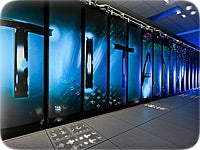The Tianhe-2 supercomputer has retained its crown as the world’s most powerful system for the fourth consecutive time in the Top500 supercomputing rankings.
Tianhe-2 was built by China’s National University of Defense Technology and first landed on the Top500 supercomputer list in June of 2013. At that time, Tianhe-2’s performance was rated at 33.86 petaflops.
The Tianhe-2’s performance was still rated  at 33.86 petaflops a year later in June of 2014 and remains at that same figure now in November.
at 33.86 petaflops a year later in June of 2014 and remains at that same figure now in November.
As has been the case for the last two years, the Cray-built Titan supercomputer at the U.S Department of Energy’s Oak Ridge National Laboratory holds down the number two spot on the list at 17.59 petaflops.
Overall, across the top 500 systems the combined performance has now hit 309 petaflops, up from 250 petaflops in November of 2013. While the overall performance is growing year-over-year, the pace of growth has slowed down in recent years.
“This lag in the overall average performance of all 500 systems is noticeably influenced by the very large systems at the top of the list,” the Top500 press release stated.”
Recent installations of very large systems – up to June 2013 – have counteracted the reduced growth rate at the bottom of the list, but with few new systems at the top of the past few lists, the overall growth rate is now slowing.”
Key Trends Continue in 2014
With little movement in the list, a number of key trends remains the same. Among those trends is the fact that Linux continues to dominate, with 485 out of the top 500 systems.
IBM also continues to be one of the leading supercomputer vendors, now holding 153 out of the top 500 systems on the list. In terms of server networking interconnects, Infiniband is now present on 225 of the top 500 systems.
In terms of geography, while China is still the location of the world’s most powerful supercomputer, the overall number of supercomputers in China on the Top500 list has declined.
For the November list there are 61 supercomputers in China, down from 76 in June. In contrast, there are now 231 supercomputers in the U.S., down by one from the 232 reported in June of 2014.
Sean Michael Kerner is a senior editor at ServerWatch and InternetNews.com. Follow him on Twitter @TechJournalist.

